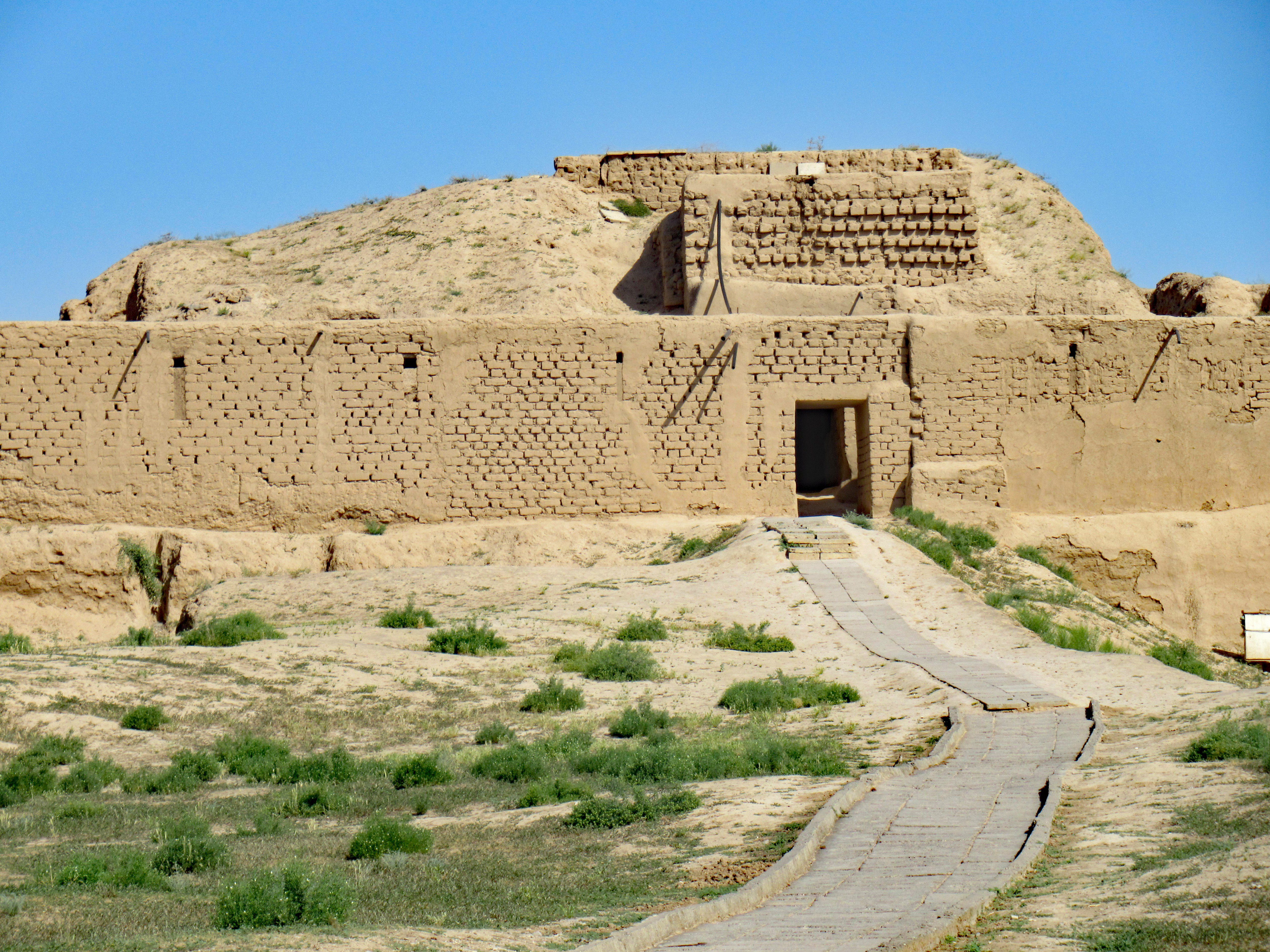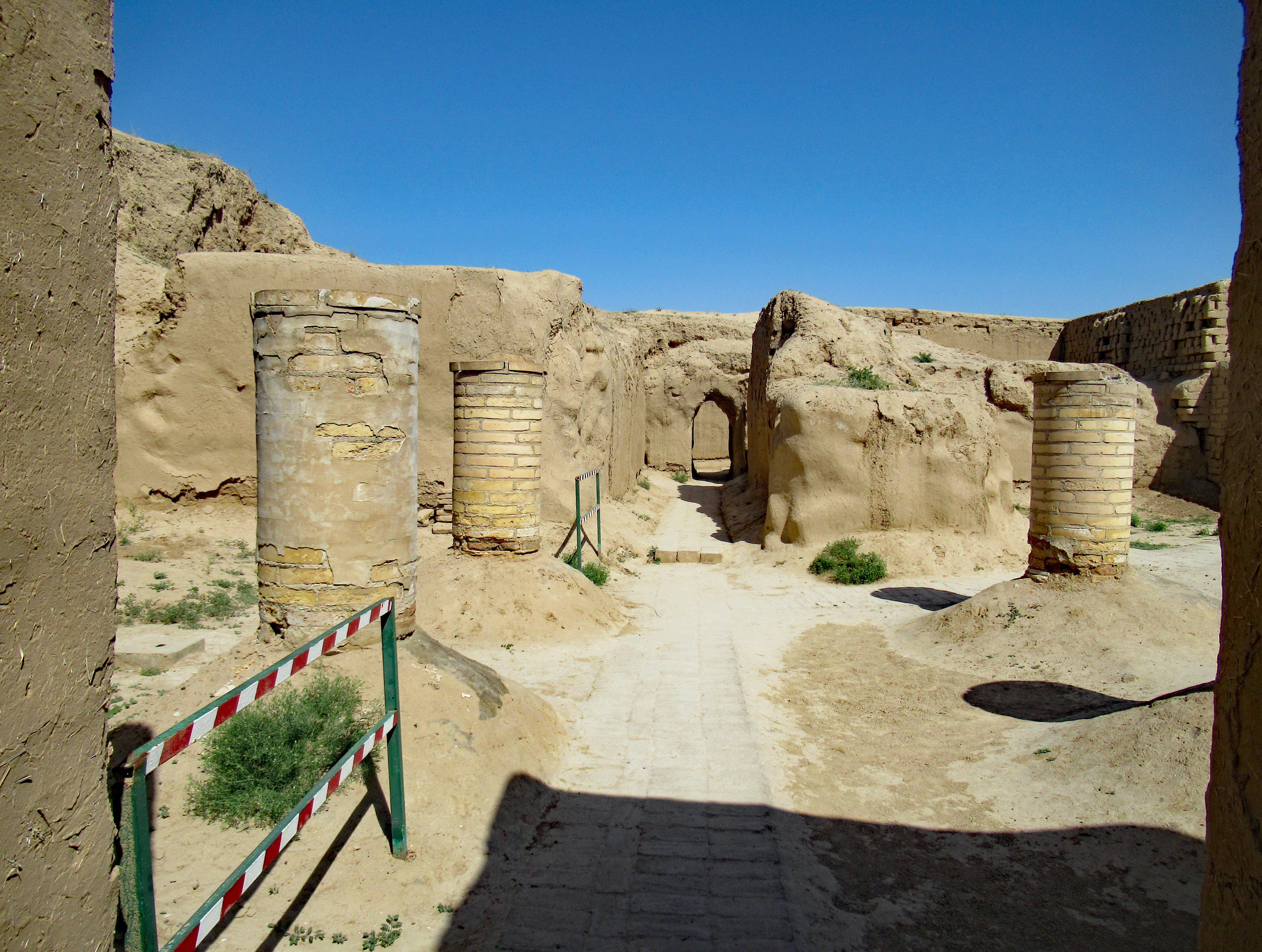Whilst staying in Turkmenistan’s capital Ashgabat, we visited two archeologic monuments – Old and New Nisa. Located 18km from the city in Bagir village, it has been a UNESCO World Heritage Site since 2007.
Just as we arrived at the deserted site, so did six Chinese tourists travelling with the same company, and we were joined together with our guide taking the lead. Although we felt a little miffed, it saved us having to constantly dodge round or compete with them, and although there was lots of ‘oohing’ from them, it was the best option.
Guides are provided with an information pack containing a site map, and helpfully for unimaginative Silver Travellers, an artist’s view of how it would have looked. There were also photos of artefacts discovered at the site, although we had seen the actual items the previous day in the National Museum in Ashgabat.
A path took us between what would have been two reservoirs separating New Nisa (the ancient town) and Old Nisa (the royal citadel). As there is little to see in New Nisa, we concentrated on the latter.
As with such sites, there is always a long and complicated history to get out of the way, which started with the Parthians, who I’d never heard of, and continued onwards with many instantly forgotten names and dates. However, stories linger longer in the mind and there were two in particular. The first was about a battle where the soldiers metal uniforms were so highly polished, they dazzled the enemy when their outer clothing was removed, whilst the noise from accompanying drums deafened them. The second told of a female warrior who was bathing when battle commenced and she immediately cut off her hair and having being victorious, returned to her bath.
Some of the ruins had been reconstructed in a sympathetic manner and there were windows at various heights, although I can’t recall the reason. We followed a path through the king’s throne room, a waiting room for his subjects, what would have been a red room judging by the colour still on some of the bricks, a circular hall and the ruins of huge columns.
My favourite objects in the National Museum had been ivory rhytons, or horn shaped vessels from which wine was poured. Apparently, one held three litres of wine which a man had to drink and then walk a straight line to prove he was strong: it sounded slightly familiar to the old breathalyser test. We were also shown photos of tiny statues found on the site, and the niches which would have contained Hellenistic statues.
The walking was relatively good and even, but there was a flight of steps to reach the site which were shallow as they were apparently built for a visit by the former French President Mitterrand who had a bad leg.
Whilst it was not my favourite site in Turkmenistan, it did afford spectacular views of the surrounding mountains.












